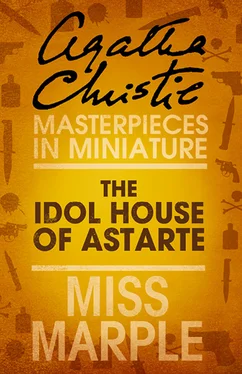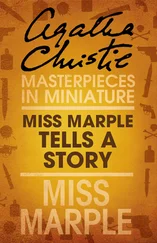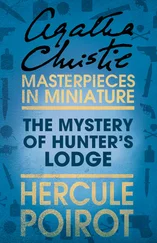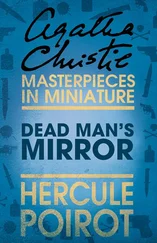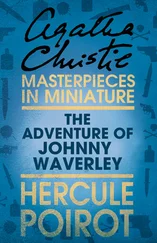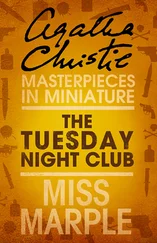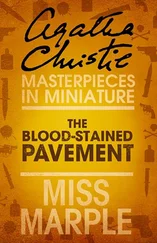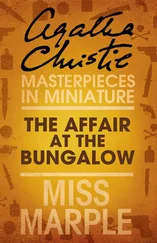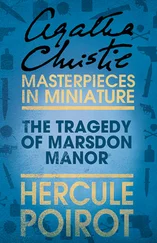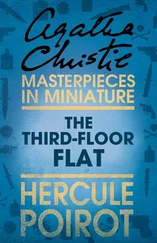THE IDOL HOUSE OF ASTARTE
A Short Story
by Agatha Christie
Copyright
This short story is entirely a work of fiction. The names, characters and incidents portrayed in it are the work of the author’s imagination. Any resemblance to actual persons, living or dead, events or localities is entirely coincidental.
Published by HarperCollins Publishers Ltd 1 London Bridge Street London SE1 9GF www.harpercollins.co.uk
‘The Idol House of Astarte’ was first published in Royal Magazine, January 1928, and in the USA as ‘The Solving Six and the Evil Hour’ in Detective Story Magazine, 9 June 1928.
This ePub edition published April 2012.
Copyright © 2012 Agatha Christie Ltd.
A catalogue record for this book is available from the British Library
All rights reserved under International and Pan-American Copyright Conventions. By payment of the required fees, you have been granted the nonexclusive, nontransferable right to access and read the text of this e-book on-screen. No part of this text may be reproduced, transmitted, downloaded, decompiled, reverse-engineered, or stored in or introduced into any information storage and retrieval system, in any form or by any means, whether electronic or mechanical, now known or hereinafter invented, without the express written permission of HarperCollins e-books.
EPub Edition © 2012 ISBN: 9780007486618
Version: 2017-04-18
Contents
Cover
Title Page THE IDOL HOUSE OF ASTARTE A Short Story by Agatha Christie
Copyright
The Idol House of Astarte
About the Publisher Конец ознакомительного фрагмента. Текст предоставлен ООО «ЛитРес». Прочитайте эту книгу целиком, купив полную легальную версию на ЛитРес. Безопасно оплатить книгу можно банковской картой Visa, MasterCard, Maestro, со счета мобильного телефона, с платежного терминала, в салоне МТС или Связной, через PayPal, WebMoney, Яндекс.Деньги, QIWI Кошелек, бонусными картами или другим удобным Вам способом.
The Idol House of Astarte
‘The Idol House of Astarte’ was first published in Royal Magazine, January 1928, and in the USA as ‘The Solving Six and the Evil Hour’ in Detective Story Magazine, 9 June 1928.
‘And now, Dr Pender, what are you going to tell us?’
The old clergyman smiled gently.
‘My life has been passed in quiet places,’ he said. ‘Very few eventful happenings have come my way. Yet once, when I was a young man, I had one very strange and tragic experience.’
‘Ah!’ said Joyce Lemprière encouragingly.
‘I have never forgotten it,’ continued the clergyman. ‘It made a profound impression on me at the time, and to this day by a slight effort of memory I can feel again the awe and horror of that terrible moment when I saw a man stricken to death by apparently no mortal agency.’
‘You make me feel quite creepy, Pender,’ complained Sir Henry.
‘It made me feel creepy, as you call it,’ replied the other. ‘Since then I have never laughed at the people who use the word atmosphere. There is such a thing. There are certain places imbued and saturated with good or evil influences which can make their power felt.’
‘That house, The Larches, is a very unhappy one,’ remarked Miss Marple. ‘Old Mr Smithers lost all his money and had to leave it, then the Carslakes took it and Johnny Carslake fell downstairs and broke his leg and Mrs Carslake had to go away to the south of France for her health, and now the Burdens have got it and I hear that poor Mr Burden has got to have an operation almost immediately.’
‘There is, I think, rather too much superstition about such matters,’ said Mr Petherick. ‘A lot of damage is done to property by foolish reports heedlessly circulated.’
‘I have known one or two “ghosts” that have had a very robust personality,’ remarked Sir Henry with a chuckle.
‘I think,’ said Raymond, ‘we should allow Dr Pender to go on with his story.’
Joyce got up and switched off the two lamps, leaving the room lit only by the flickering firelight.
‘Atmosphere,’ she said. ‘Now we can get along.’
Dr Pender smiled at her, and leaning back in his chair and taking off his pince-nez, he began his story in a gentle reminiscent voice.
‘I don’t know whether any of you know Dartmoor at all. The place I am telling you about is situated on the borders of Dartmoor. It was a very charming property, though it had been on the market without finding a purchaser for several years. The situation was perhaps a little bleak in winter, but the views were magnificent and there were certain curious and original features about the property itself. It was bought by a man called Haydon – Sir Richard Haydon. I had known him in his college days, and though I had lost sight of him for some years, the old ties of friendship still held, and I accepted with pleasure his invitation to go down to Silent Grove, as his new purchase was called.
‘The house party was not a very large one. There was Richard Haydon himself, and his cousin, Elliot Haydon. There was a Lady Mannering with a pale, rather inconspicuous daughter called Violet. There was a Captain Rogers and his wife, hard riding, weatherbeaten people, who lived only for horses and hunting. There was also a young Dr Symonds and there was Miss Diana Ashley. I knew something about the last named. Her picture was very often in the Society papers and she was one of the notorious beauties of the Season. Her appearance was indeed very striking. She was dark and tall, with a beautiful skin of an even tint of pale cream, and her half closed dark eyes set slantways in her head gave her a curiously piquant oriental appearance. She had, too, a wonderful speaking voice, deep-toned and bell-like.
‘I saw at once that my friend Richard Haydon was very much attracted by her, and I guessed that the whole party was merely arranged as a setting for her. Of her own feelings I was not so sure. She was capricious in her favours. One day talking to Richard and excluding everyone else from her notice, and another day she would favour his cousin, Elliot, and appear hardly to notice that such a person as Richard existed, and then again she would bestow the most bewitching smiles upon the quiet and retiring Dr Symonds.
‘On the morning after my arrival our host showed us all over the place. The house itself was unremarkable, a good solid house built of Devonshire granite. Built to withstand time and exposure. It was unromantic but very comfortable. From the windows of it one looked out over the panorama of the Moor, vast rolling hills crowned with weather-beaten Tors.
‘On the slopes of the Tor nearest to us were various hut circles, relics of the bygone days of the late Stone Age. On another hill was a barrow which had recently been excavated, and in which certain bronze implements had been found. Haydon was by way of being interested in antiquarian matters and he talked to us with a great deal of energy and enthusiasm. This particular spot, he explained, was particularly rich in relics of the past.
‘Neolithic hut dwellers, Druids, Romans, and even traces of the early Phoenicians were to be found.
‘“But this place is the most interesting of all,” he said “You know its name – Silent Grove. Well, it is easy enough to see what it takes its name from.”
Конец ознакомительного фрагмента.
Текст предоставлен ООО «ЛитРес».
Читать дальше
